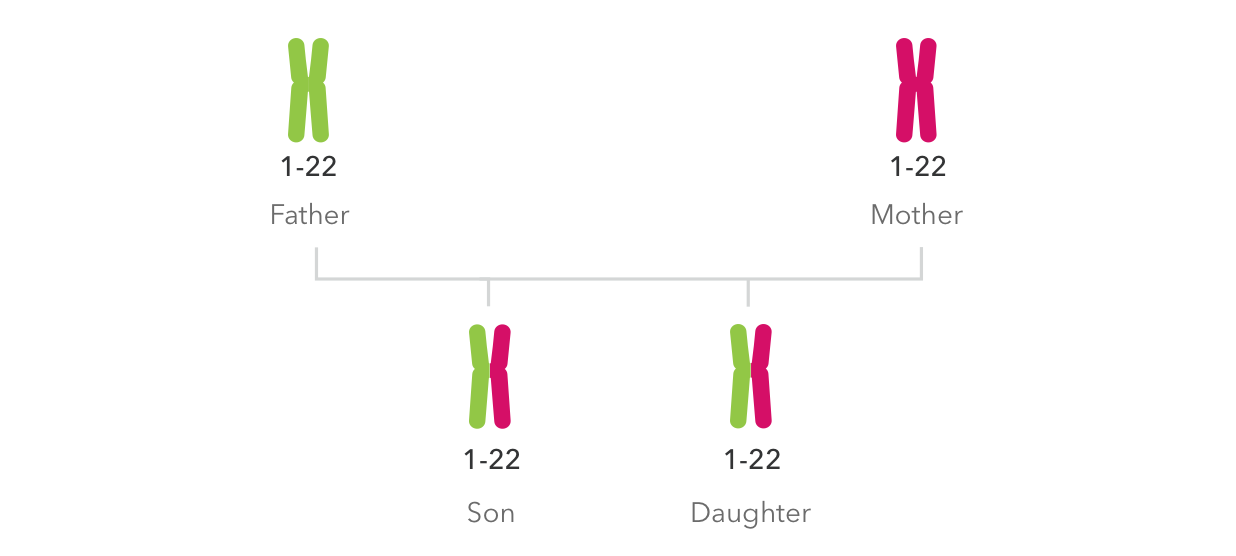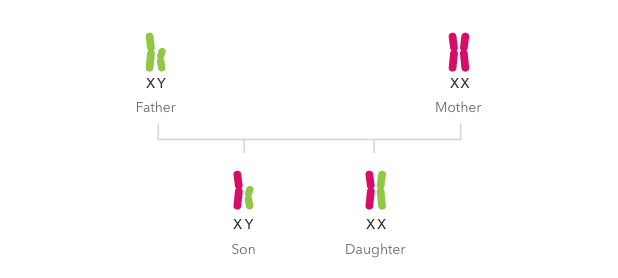As an adopted child, DNA has always been a foreign subject. I keep trying to learn more about this genetic bond that we have with our parents, siblings, and offspring. Since DNA is currently the only connection that I have with the Banister family (that I believe to be a part of), I continue to explore the complicated scientific aspects of this phenomenon.
I’ve already discussed the centimorgan (Cm) comparisons between two people who share DNA (See Diary of an Adoptee Post #719). Anyone who takes a DNA saliva test through Ancestry.com will get a list of matching “relatives” arranged from highest to lowest. A range of 2400-2800 means you are parent, child, or identical twin. 20-85 means you are likely a 4th cousin. My highest match was 1,719, indicating a potential half-sibling relationship. This is what has led me to possible identification of my birth father. I also share 40 “segments” with this particular individual, and 30 segments and 894 Cm with her son. In simple terms, what does this mean?
If you are female, you share 23 segments with each parent, and each segment spans the entire chromosome. If you are male, you share 22 segments with the father (since the DNA Relatives feature does not use the Y chromosome) and 23 segments with your mother. Shared DNA segments, also referred to as ‘matching segments‘, are the sections of DNA that are identical between two individuals. These segments were most likely inherited from a common ancestor. DNA segments can be found on all of the 22 autosomal chromosomes.
I happened to check my list the other day for any updates and found another key DNA relationship. The name Susan Smith popped up on the Ancestry site with 41 segments and 991 Cm. She must have just recently taken the test. I looked her up on Facebook and found a recognizable Banister name as a “Friend,” so this might be the right person. Could this be a connection to the birth mother’s side of my family? I know her identity through adoption records, but the closest match that I have to her in on the 23andMe website. It was my very first exposure to this kind of testing, but out of curiosity I ultimately used both services. Apparently 23andMe developed the technology used by Ancestry.com. Marilyn Banister (5.56%, 12 segments, 414 Cm) and Janine Marthai (5.3%, 17 segments, 400 Cm) are my closest matches on that listing. Janine’s mother was a Banister, who I’ve already had the opportunity to meet.
There are hundreds of different DNA testing services. As a result, the lists of matching relatives vary with each site. This is why I marvel at the coincidence that both myself and a likely “half-sibling” both happened to use the same Ancestry service. She got it as a Mother’s Day gift from her son, while I elected to add a second test probably due to a special offer. It allowed us to meet over the Holidays. (See Post #786).
You could stop reading right here for today, but I tend to still have a skeptical side. I can never get enough facts, especially when it comes to making scientific-based accusations about the couple that brought me into this world. I went to the 23andMe website for more information and graphics. They offer this explanation of their genetic comparisons:
We estimate the genealogical relationship between two individuals. We do this by comparing your autosomal DNA (chromosomes 1-22) and X chromosome(s) with other 23andMe members who are participating in the DNA Relatives feature.
While the autosomal DNA is inherited in the same way for both genders, the X chromosome is not:
- Autosomal DNA is inherited equally from both parents for both men and women.

- The X chromosome is a sex chromosome; women inherit an X chromosome from each parent, while men only receive an X chromosome from his mother. In men, the X chromosome is paired with the Y chromosome – which is only inherited from his father.

The Y chromosome is not used by the 23andMe DNA Relatives feature to detect matches.
We say that two individuals share DNA when both individuals inherited the same DNA from the same ancestor. For example, you and your sister share DNA that you both inherited from the same parent. You and your first cousin share DNA inherited from your mutual grandparents. The 23andMe DNA Relatives feature uses patterns of DNA sharing to estimate relationships.
I will continue to pursue answers about my background, but I want to remain sensitive about all the people involved. I don’t necessarily like having to dig into other peoples’ backgrounds, but I’m driven to finding closure about this important aspect of my life.

Leave a Reply